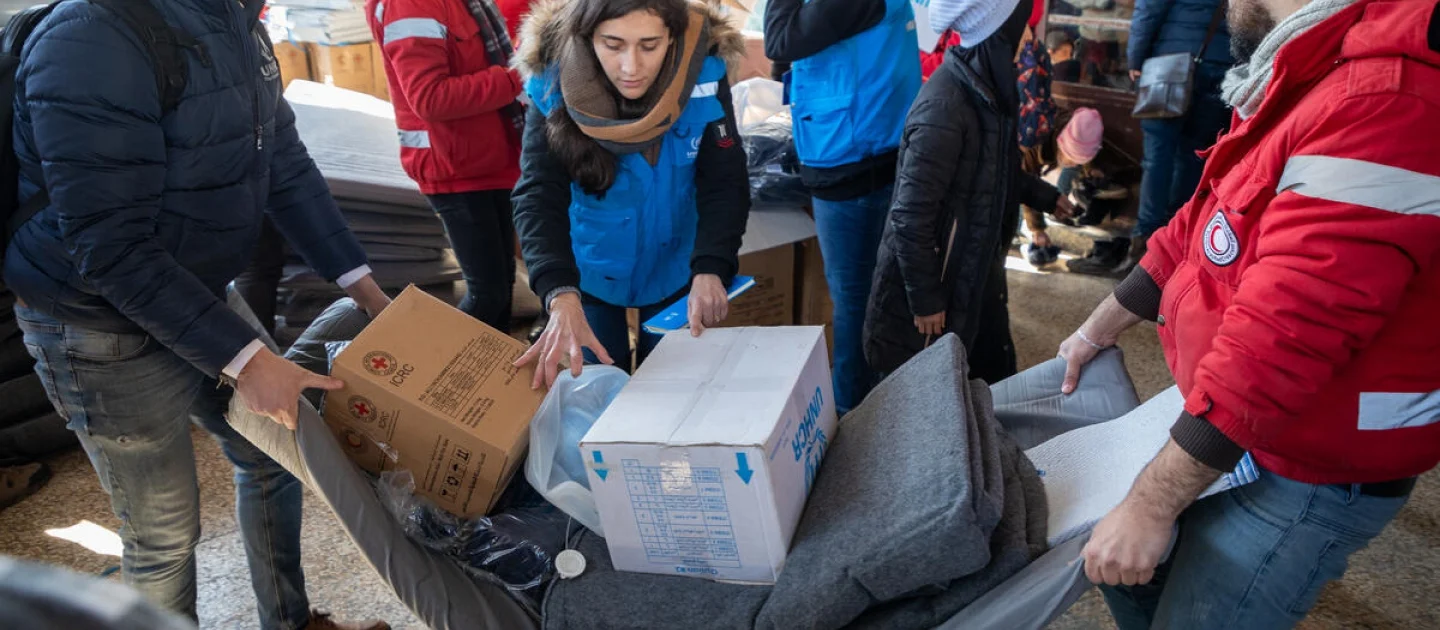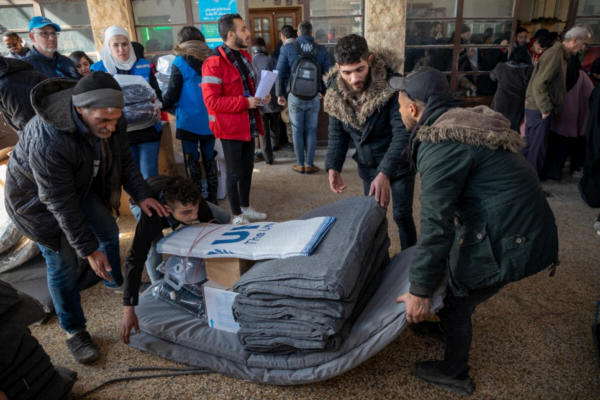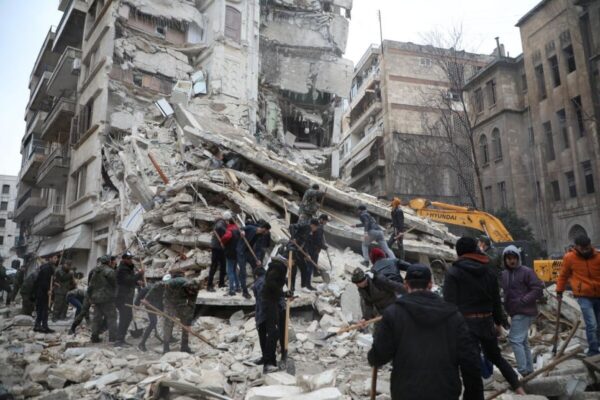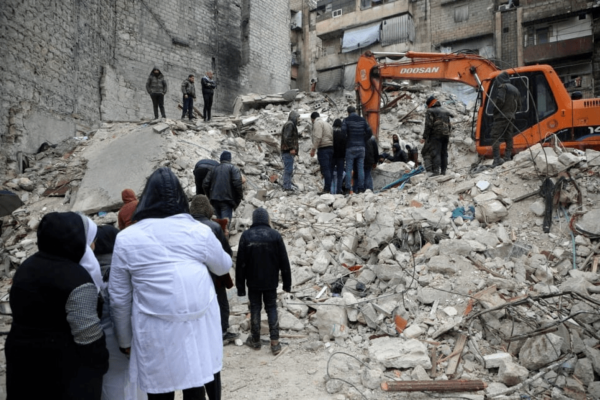
UNHCR staff deliver emergency aid to earthquake-affected families staying in a mosque in the Suleiman Al-Halabi neighbourhood of Aleppo, Syria. © UNHCR/Hameed Maarouf
UNHCR delivers assistance to families left homeless by the disaster, while reopening of aid route to northwest Syria offers hope to those already displaced during country’s 12-year crisis.
By Hameed Maarouf in Aleppo, Syria | 10 February 2023
In a covered marketplace in Aleppo’s historic Old City, families sit crammed inside the small retail units, huddled together for warmth and bundled in layers of clothes and thermal blankets – their only insulation from the freezing winter temperatures currently gripping this part of northern Syria.
They arrived here in the aftermath of the devastating earthquakes that struck southern Türkiye and northern Syria on 6 February, which has so far claimed the lives of more than 20,000 people in both countries with an unknown number still missing beneath the rubble.
The families now living in the hastily organized collective shelter in Aleppo’s Al-Harir souq are here because they have nowhere else to go, either unable or too afraid to return to homes damaged or destroyed in the earthquakes.
Mazen, a father of four who was previously displaced from his home in the Salahadin neighbourhood of Aleppo for several years during Syria’s long-running crisis, said he thought he and his family were going to die when the earthquake struck in the early hours of Monday.
“I was sleeping at the time. I [felt] something shaking, and I just heard my wife say ‘Earthquake, earthquake!’,” he said. “I got up and covered my child, saying to myself if anything happens, I will get the [impact] and save my child.”
“After one or two minutes, it stopped and I said, ‘thank God we are alive’. [But] maybe one minute after, it started again. That second one was very scary. We went out into the road and after that we didn’t go back to the house,” Mazen added.
Wearing a grey bathrobe over layers of clothing and a scarf wrapped around his woollen hat for extra warmth, Mazen said the earthquake left deep cracks in the walls of his family’s fourth-floor apartment and they do not feel safe going home.
Nearby, dozens more families are sheltering inside a mosque in the Suleiman Al-Halabi district of the city. Adults sit in muted groups on the red-carpeted floor while young children run and play in the space between them. Most have nothing but the clothes they are wearing, having left everything behind as they fled their homes.
On Wednesday, teams from UNHCR, the UN Refugee Agency, and its partner the Syrian Arab Red Crescent were able to deliver much-needed aid to those sheltering in the mosque. Since Monday, the agency and its partners have been distributing prepositioned stocks of relief items including thermal blankets, mattresses, solar lamps and winter clothes to Syrians affected by the earthquake.
“This is a crisis within a crisis.”
Many of those affected were already living in a parlous state before the disaster struck. Millions in the northwest of the country close to the Turkish border had already been displaced from their homes during the country’s 12-year crisis. The combination of economic turmoil and soaring prices has left many more struggling for daily survival.
“This is a crisis within a crisis,” UNHCR’s Representative to Syria, Sivanka Dhanapala, told reporters at a news briefing on Friday. “6.8 million people are already internally displaced in the country, and this was before the earthquake. These are people who are living in very difficult conditions, in very fragile housing, and of course, they have been hit the hardest.”
“It is literally the coldest time of the year in Syria, with blizzards raging in the affected areas,” Dhanapala added. “This of course impacts the access, roads have been damaged in terms of trying to reach people – it’s been very, very difficult.”
“We don’t know what it going to happen.”
In the immediate aftermath of the earthquakes, UNHCR partners in the northwest of the country were able to distribute prepositioned stocks of aid to some of the most vulnerable survivors. But damage to the only road used to truck international aid into northwest Syria from Türkiye had hampered efforts to bring more assistance in.
With the road now open, the first UN aid convoy of six trucks went in on Thursday and more are on the way.
For now, the focus is on providing life-saving assistance to those who have lost everything and helping them make it through winter.
Outside the shopfront where his family are staying in the covered market in Aleppo, Mazen knows he is among the lucky ones, and for now prefers not to look too far ahead.
“We can only think about this minute now,” he said. “Tomorrow, we don’t know what is going to happen, but for now, Alhamdulillah [praise God], we are safe.”
Originally published by UNHCR on 10 February 2023.





